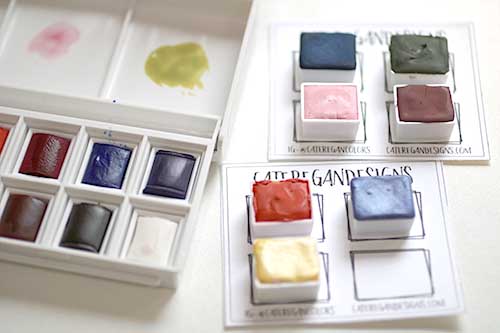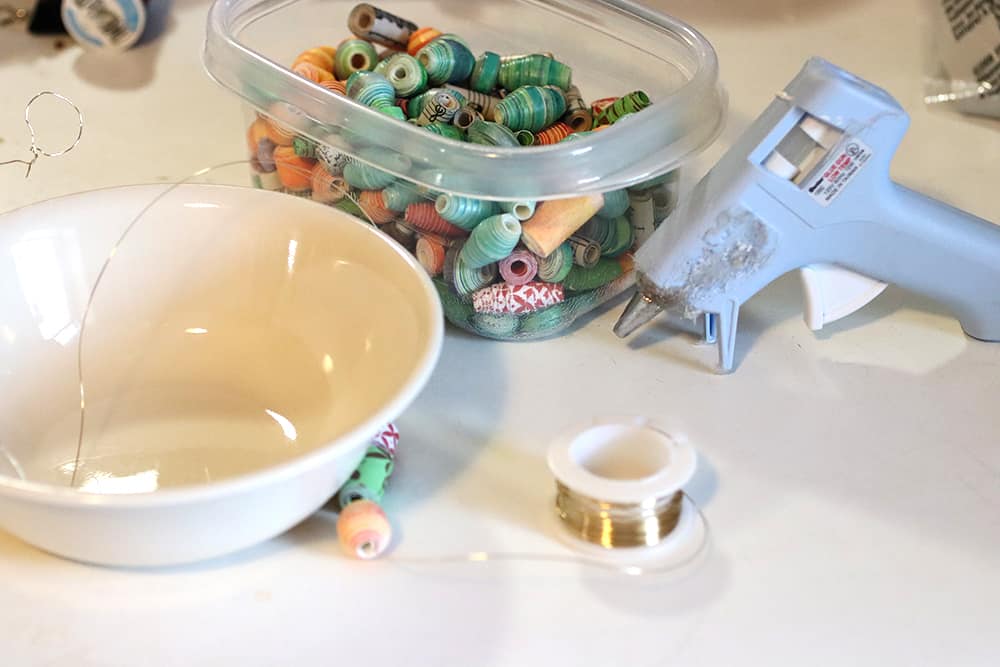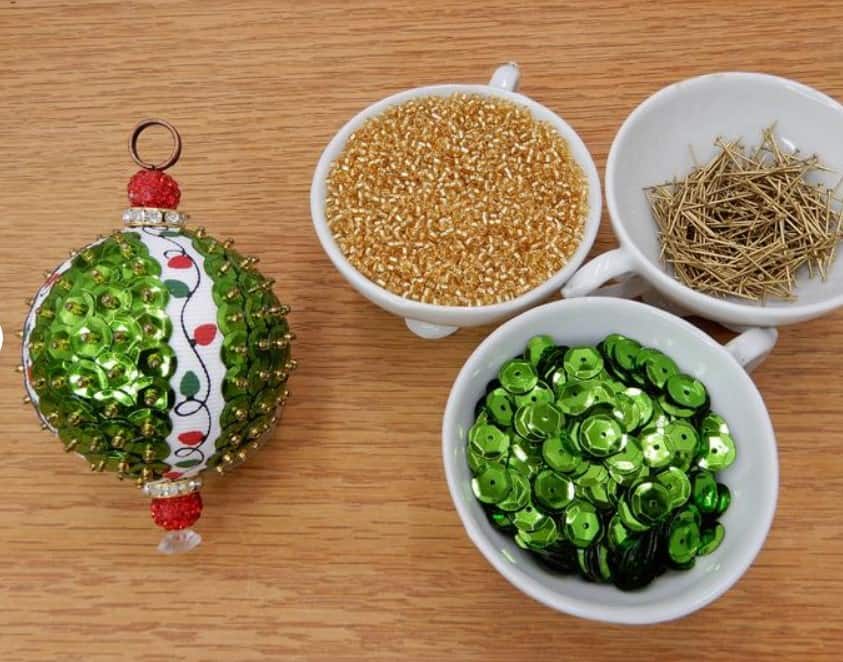Doing crafts as an adult is a great way to use your creativity, relax, and develop new skills, but a lot of “best crafts for adults” articles don’t really tell you what you need to do specific crafts.
Some crafts are more involved than others, or need special equipment, and that can get pretty complicated.

 on Etsy
on EtsyTable of Contents
- What kind of crafts are there
- What crafts can I do at home, and which need the most equipment?
- How to choose a craft
- Craft kits and tutorials to try
What kind of crafts are there
There are many types of crafts available, some of which need specialized equipment that the average person doesn’t have at home. Wikipedia divides crafts into specific categories, including:
divides crafts into specific categories, including:
- Ceramics and glass
- Fiber and textiles
- Flowers
- Leatherwork
- Fashion
- Needlework
- Paper crafts
- Housewares
- Wood and furniture crafts
- Stone crafts
- Metal crafts
All of these categories include some types of crafts that are more and less complicated as far as the necessary equipment goes, but some require more technical skill and equipment than others.
For example, ceramics and glass work are going to require that you have specific tools and equipment, and that may eliminate doing some projects at home without that equipment.
On the other hand, paper crafts are often suggested as an at-home craft because they usually require things that people already have available.
Let’s look at the kind of things that you need to do specific crafts, and what you can REALLY do at home without having to go find a lot of specialized tools.

What crafts can I do at home, and which need the most equipment?
Some of the easiest crafts to do at home are paper crafts, flower arranging, drawing, and creating digital art. All of these require very little specialized equipment, and they involve skills that most people have, or have practiced before. There is a wide variety of different types of crafts that fall under the umbrella of those categories, and some require no equipment at all.
A bit more complicated than the first group are crafts like food crafts, painting, fiber arts, needlework, jewelry making, basket making, and leatherwork.
These all involve more tools or equipment and may also involve more expense as far as materials go.
For example, you may have to go shopping for yarn or fabric if you want to start knitting or sewing, so the expense is going to be a little higher at the outset.
These are all very easy to do at home without a huge investment in specialized equipment, though.

Read the article about Knitting vs. Crochet: What’s The Difference?
The most complicated crafts would be those that involve a lot of tools that you may not have available, like woodworking, ceramics, glasswork, stone crafts, and metalwork.
These aren’t necessarily more difficult than other types of crafts, but they can be more involved simply because you may not have things like a kiln, a woodworking workshop, or welding equipment at your house!
These are all things that you can definitely learn, but as a beginner, it could be good to either follow an online tutorial or sign up for a class at a local arts workshop.
How to choose a craft
To choose which craft you might want to try, you’ll need to decide on whether you want to invest in the craft itself, or whether you prefer to spend less money and use tools and materials that you have on hand. You need to decide whether the crafts that are more accessible are things that you’re interested in, and if they’re not, what you do want to try out.
Consider your interests, and if you’re deciding between two types of craft activities, you might want to go with something that you know you’ll like doing.
For example, if you enjoy fashion, you might get a lot out of learning how to knit or sew, or even starting a sketchbook of ideas that you have for clothing designs.
If you enjoy interior design, you could invest in a class in ceramics or stained glass to make some decor for your own home.
For an article about things you can make with your fabric scraps, click here.

You should also consider what you plan on doing with the things that you’ll be making.
For people who don’t want to end up with a lot of things that they made in their houses, it might be a good idea to take up a craft that’s easily “giftable,” like jewelry, junk journaling, or flower arranging.
If your intention is to make things that you can give as heirloom-type presents, you might want to take up quilting or other needlework that people can use in their own homes.
You might just want to try something that you’ve always wanted to try and never had a chance to.
Doing crafts for the experience is 100% acceptable, and can be a nice change from your normal routine.
If you’ve never had a chance to take up cake decorating, take a class or get some basic equipment and try it out. If you’ve always wanted to learn to paint, get some watercolors and give it a shot!
You may also want to create a “hit list” of different crafts to try to see where your interest really lies if you’re not set on one thing already.
An easy way to test the waters would be to get some kits or online classes to try different things out without having to invest in a lot of equipment.
Many of the Artisan Shopping Directory members sell craft supplies and have tutorials or online classes available, so those are an easy way to see if you enjoy projects before you spend a lot on supplies that you might not end up using.
Craft kits and tutorials to try
This video tutorial from Wallifyer walks you through how to make a birthday card  using digital clipart and Canva.
using digital clipart and Canva.
Please note: Some of the links on this page are affiliate links, which will give me a small commission at no cost to you if you buy something when you use them.
For flower arranging, Jenny of Center Petals offers an online mini course that you can do at your convenience that will help you learn the basics of making centerpieces . She also has a YouTube channel with flower arranging tips here: Center Petals.
. She also has a YouTube channel with flower arranging tips here: Center Petals.
For people who know the basics of stained glass making, Cheryl Kumiski Glass offers patterns for stained glass panels .
.
To learn cross stitch with a twist, check out the Notorious Needle’s library of cross-stitch tutorials, and her YouTube channel.

To learn more about sequin and bead Christmas ornament kits, click here.
Want to keep it simple and just do some coloring to relax? Try this printable mandala  from Whimsy Dreams Clipart.
from Whimsy Dreams Clipart.
To make a doctor set for dolls, get this stethoscope sewing pattern from Daisy STEM shop.
from Daisy STEM shop.
For beginners to macrame, get this tutorial to make a wall hanging from Wires and Knots Designs.
from Wires and Knots Designs.
This kit from Vaida Petrakis has everything in it that you’ll need to make 12 felted acorns for home decor or to give to friends!
or to give to friends!
If you’re interested in making lampwork glass , try this tutorial from Anne Londez Glass, and her YouTube channel playlist called “Glass School.”
, try this tutorial from Anne Londez Glass, and her YouTube channel playlist called “Glass School.”
For cake decorating and gumpaste flower tutorials, go to A Cake To Remember’s website and YouTube channel .
.
If you’d like to make some Christmas gifts, try this tutorial for Christmas tree earrings from Andrea at My Very Crafty Life. She also has a YouTube channel here: My Very Crafty Life
from Andrea at My Very Crafty Life. She also has a YouTube channel here: My Very Crafty Life
And if you’re looking for an activity that you can do with your kids, here’s a friendship bracelet kit from Nathalie D Cyr.
from Nathalie D Cyr.
Click to visit the Artisan Shopping Directory of Craft Supply shops.

